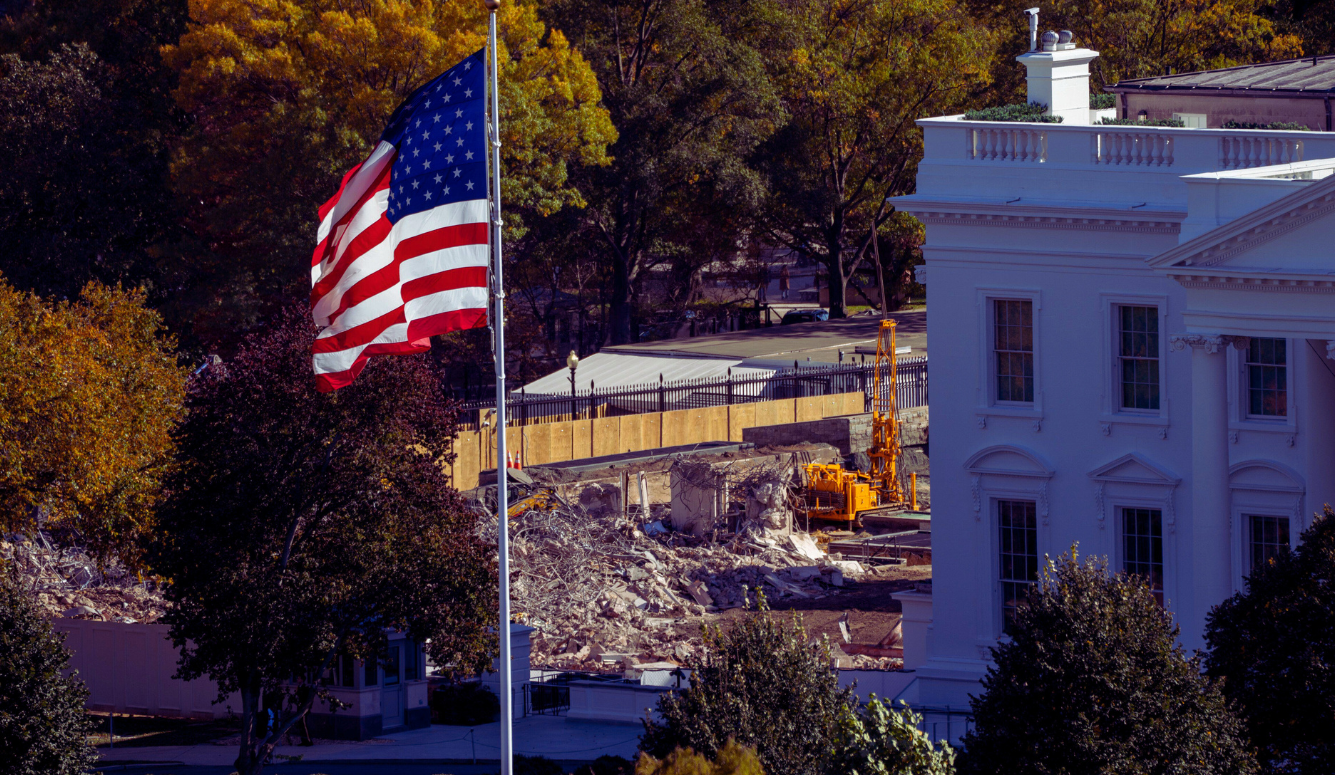Politics
Appetite for Destruction
Trump and the art of the demolition, from Bonwit Teller to the White House.

In 1979, Donald Trump acquired the block of Fifth Avenue between East 56th and 57th Streets with a plan to build his signature monument: the eponymous Tower. At the time, the site was occupied by the Bonwit Teller department store—an upscale but financially ailing retailer whose elegance had outlasted its solvency. The building’s two limestone reliefs, sculpted by René Paul Chambellan in 1929, were refined examples of New York Art Deco, their stylised female figures—emblematic of interwar cosmopolitanism—marking one of Midtown’s more graceful façades. At the time of the purchase, Trump pledged to donate the reliefs and the ornate metal grille above the entrance to the Metropolitan Museum of Art. The museum accepted, expecting that these remnants of commercial modernism would join its architectural holdings beside the salvaged cornices of Penn Station. For a brief moment, there was hope that commerce and culture might align, with the developer’s modernising ambition complementing the museum’s conservation mission.

That hope was short-lived. On 6 June 1980, a front-page report by Robert D. McFadden in the New York Times opened with this disappointing update:
Two stone bas-relief sculptures high on the facade of the Bonwit Teller Building under demolition on Fifth Avenue—pieces that had been sought with enthusiasm by the Metropolitan Museum of Art—were smashed by jackhammers yesterday on the order of a real estate developer.
[...]
Donald J. Trump, the developer, who is razing the structure to make way for a $100 million 62-story bronze-colored glass tower of apartments, offices and stores, had said several months ago that he would give the white stone panels to the museum if the cost of removing them did not prove prohibitive.
McFadden’s article included statements from Trump’s organisation, which claimed that independent appraisers had found the reliefs to be “without artistic merit,” and that removing them would delay construction and endanger workers and pedestrians. The plan to donate them to the Met was scrapped along with the reliefs themselves. The alleged rationales of cost, safety, and schedule proved sufficient to flatten any case for cultural preservation. With the artefacts destroyed, there was little left for the discontented to do but seethe with impotent indignation at the brazen cultural vandalism.
Today, Trump is US president and he is being accused of vandalising the White House. The quotation above from McFadden foreshadows the opening of a New York Times article by Luke Broadwater published on 22 October 2025:
As roaring machinery tore down one side of the White House, President Trump acknowledged on Wednesday that he was having the entire East Wing demolished to make way for his 90,000-square-foot ballroom, a striking expansion of a project that is remaking the profile of one of the nation’s most iconic buildings.
Although separated by 45 years, both stories begin with a gesture towards cultural philanthropy and end with a cultural artefact’s obliteration justified by pragmatism. Then as now, the moral pivot is as striking as the physical destruction. In the Bonwit Teller case, a promised donation became a problem of logistics; in the case of the East Wing, cultural stewardship is reduced to a footnote in a sweeping remodelling. The two acts of destruction transform what might have been deeds of civic contribution into emblems of unilateral action devoid of regard for either preservation or patrimony.





